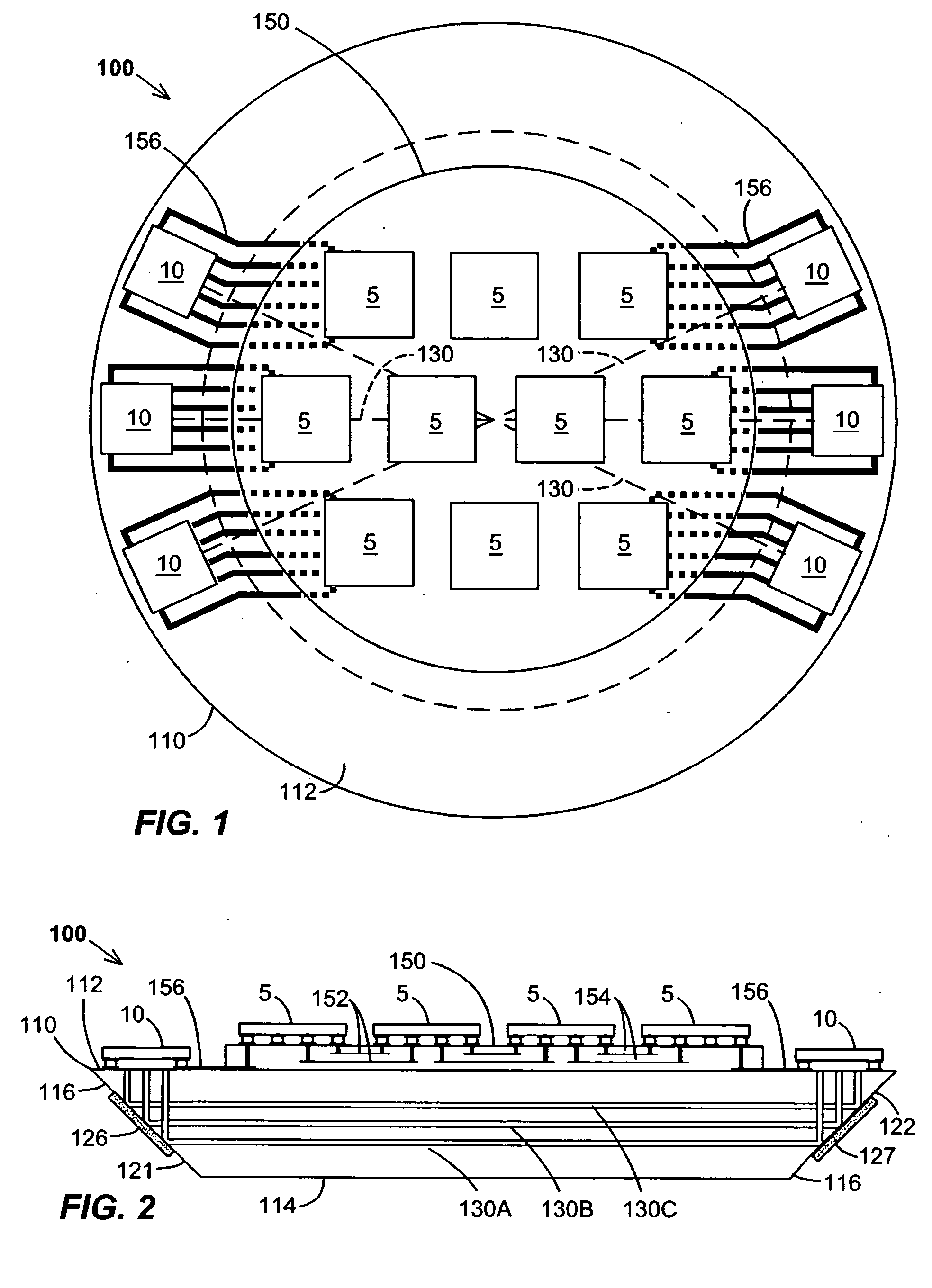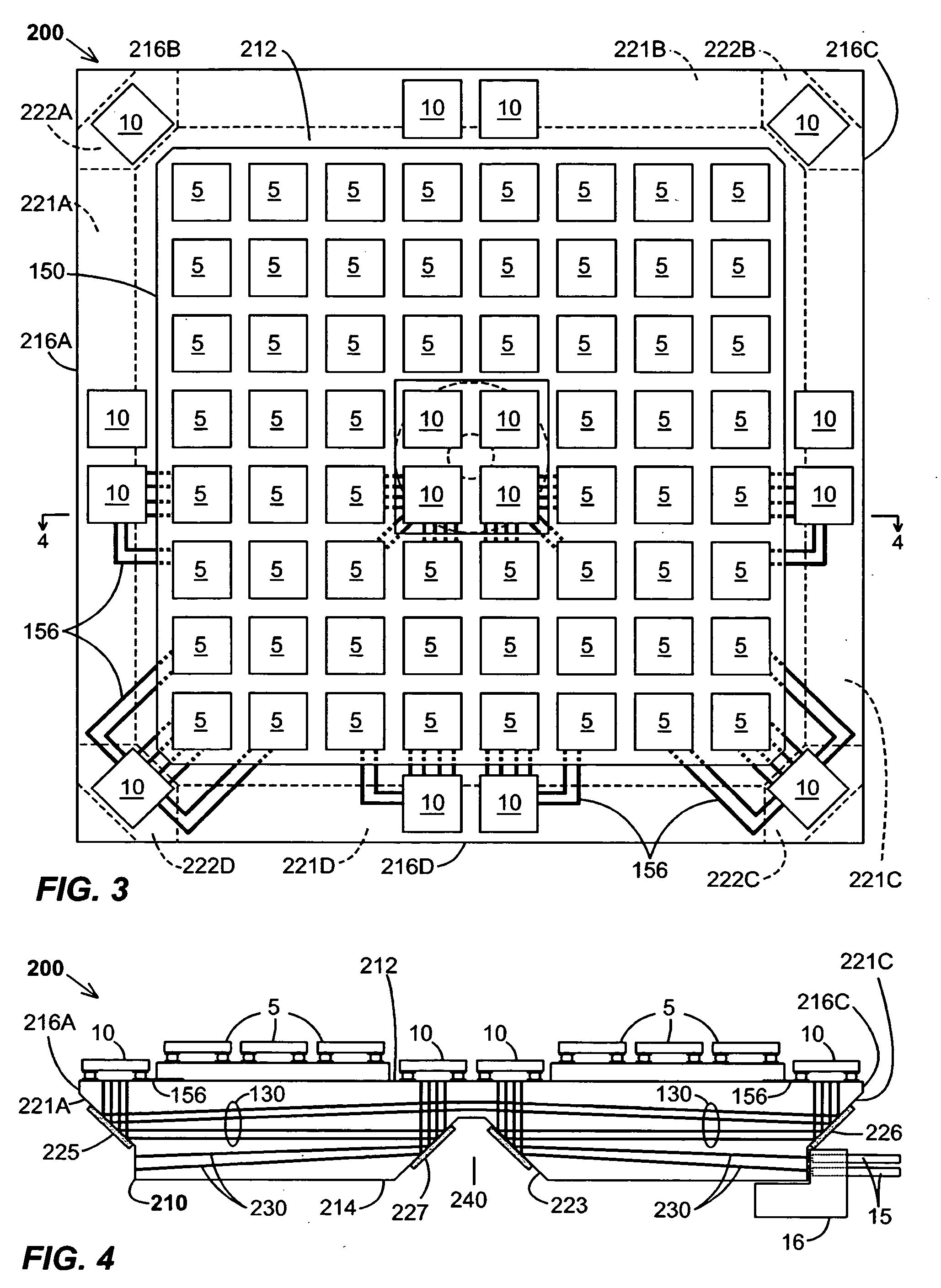Optical-routing boards for opto-electrical systems and methods and apparatuses for manufacturing the same
- Summary
- Abstract
- Description
- Claims
- Application Information
AI Technical Summary
Benefits of technology
Problems solved by technology
Method used
Image
Examples
Embodiment Construction
[0025] A top plan view of a first optical-routing board 100 is shown in FIG. 1, and a cross-sectional view thereof is shown in FIG. 2. Referring to FIG. 1, optical-routing board 100 is for holding a plurality of IC chips 5 disposed in the central area of board 100, and a plurality of opto-electric chips 10 disposed around the periphery of board 100. For visual simplicity, ten IC chips 10 and six opto-electric chips 5 are shown in FIG. 1. In typical applications, there may be tens to hundreds of IC chips 5, and tens of opto-electric chips 10, with the diameter of board 100 being relatively large (e.g., 20 cm to 40 cm). Referring to both FIGS. 1 and 2, optical-routing board 100 comprises a substrate 110 having a top surface 112, a bottom surface 114, and one or more sides 116. Selected IC chips 5, usually those closest to the side(s) 116, are electrically coupled to opto-electric chips 10 by a plurality of electrical traces 156 formed on the substrate's top surface 112. In addition, a...
PUM
 Login to View More
Login to View More Abstract
Description
Claims
Application Information
 Login to View More
Login to View More - R&D
- Intellectual Property
- Life Sciences
- Materials
- Tech Scout
- Unparalleled Data Quality
- Higher Quality Content
- 60% Fewer Hallucinations
Browse by: Latest US Patents, China's latest patents, Technical Efficacy Thesaurus, Application Domain, Technology Topic, Popular Technical Reports.
© 2025 PatSnap. All rights reserved.Legal|Privacy policy|Modern Slavery Act Transparency Statement|Sitemap|About US| Contact US: help@patsnap.com



